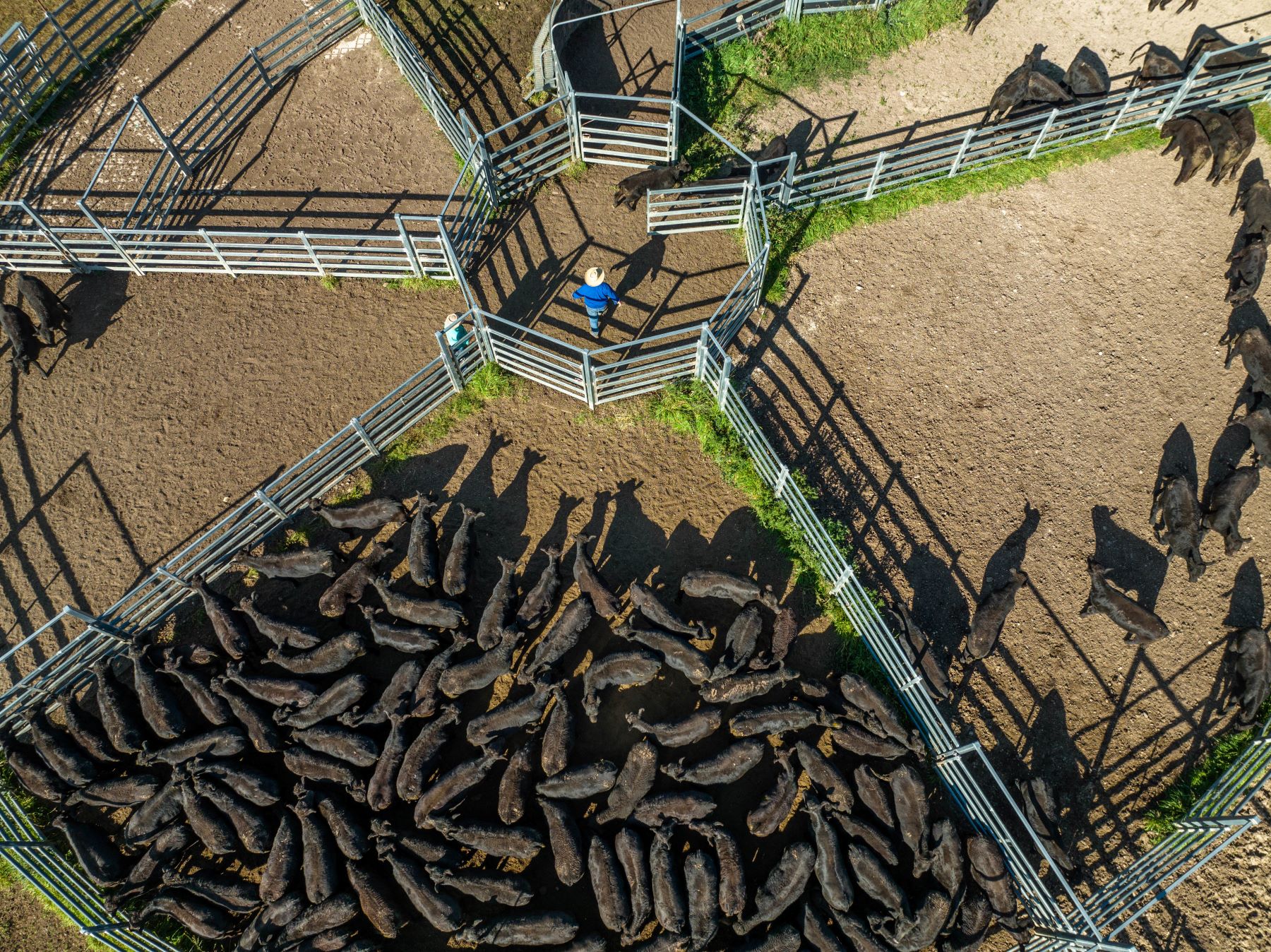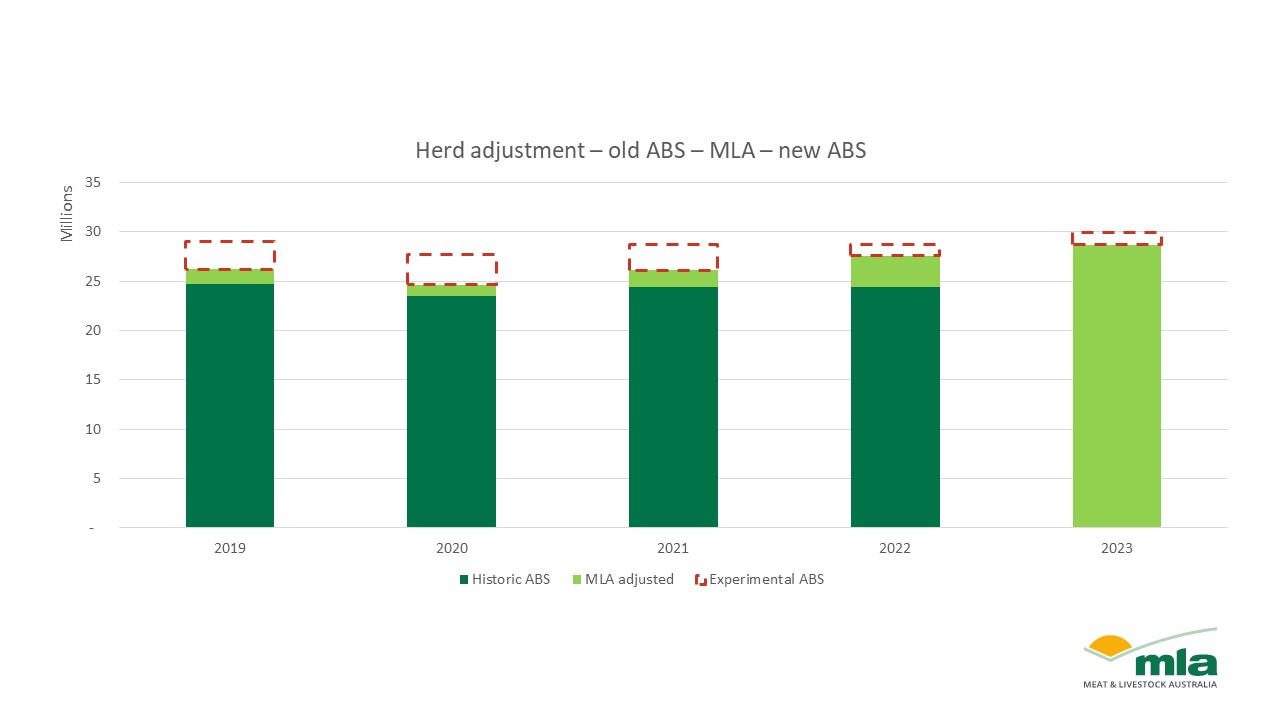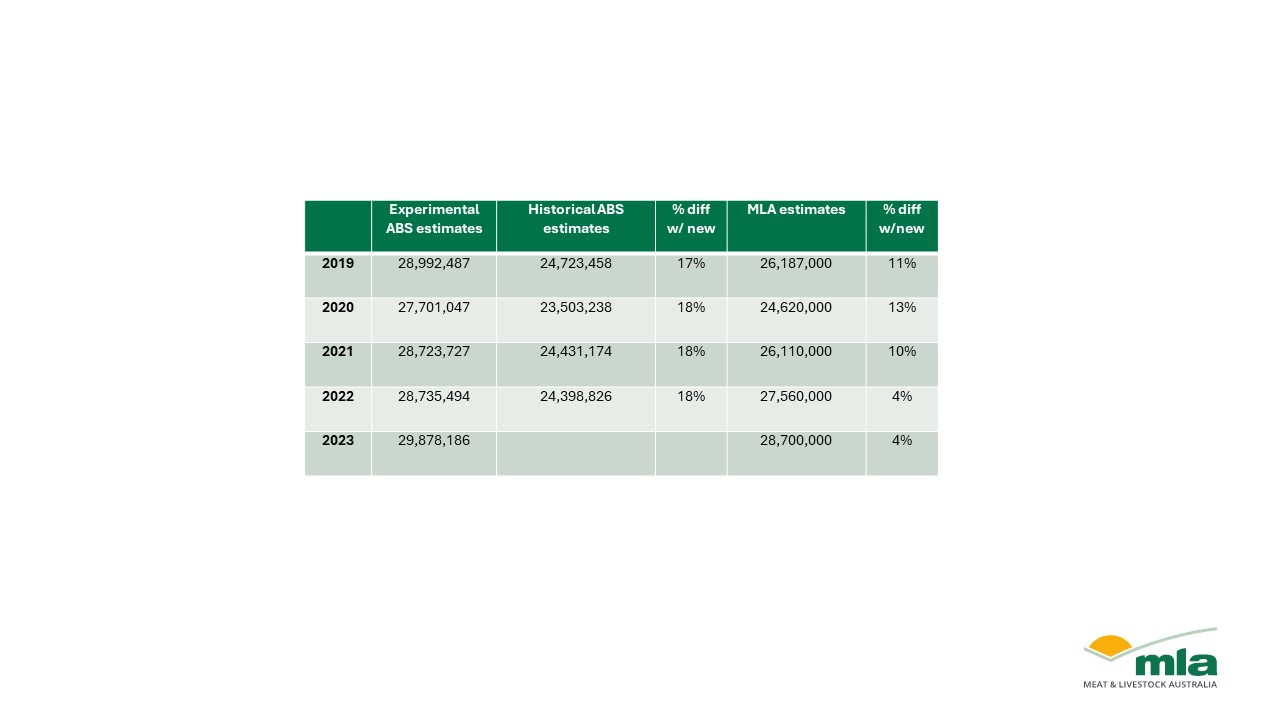Sheepmeat production down, but values still to rise
The latest ABARES outlook for livestock products has sheepmeat production dropping for the 2025–26 financial year, pushing prices higher and...
1 min read
Erin Lukey, MLA Senior Market Information Analyst : Jun 27, 2024

ABS has released five years of backdated herd numbers using a new model over survey data.
Data shows 2023 herd size was just below 30 million.
New ABS model numbers have increased against 2022 figures which has reduced the difference against MLA calculations from 13% above to 4% below.
The Australian Bureau of Statistics (ABS) has released a cattle herd figure substantially larger than any previously by the organisation.
These new, experimental numbers have been developed by modernising the way official ABS agricultural statistics are produced, with an administrative data-first approach.
For over 150 years, the ABS released herd size information using data gathered from surveys, the most recent of which being the Rural Environmental & Agricultural Commodities Survey (REACS) survey.
The ABS has now developed a herd estimate model to use in lieu of the survey data to provide livestock commodity data to industry. The new numbers released last week include:

To understand the changes to the numbers, we need to understand their differences.
Originally, REACS data covered only producers/farm businesses with an estimated value of agricultural operations (EVAO) of over 40,000. The new ABS model does not have an EVAO limit, meaning the new herd number will be larger than the previous, as it covers all producers.
As part of MLA projections, ABS figures are used as a baseline when publishing adjusted herd sizes and projection estimates. The industry has widely used these figures as a forward-looking trend line. With the update of the ABS baseline data, MLA will incorporate the new published ABS numbers in the next projections update (to be published in the coming months).
How have the numbers changed and where do they land against January 2023 MLA projections?
The table below shows the five years of national data released by ABS. This new model has put a 17–18% lift on original ABS figures and a 4–11% lift on MLA adjusted figures. This new release has shown a change on 2022 numbers, from 24.4 million head to 28.7 million head. This is an 18% difference. In 2022, MLA had an adjusted estimate of 27.6 million head. This puts the change from original ABS figures from 13% above to 4% below. For 2023, the herd size number was 29.9 million head, which is only 4% above MLA estimates for the year.

MLA is actively responding to these figure changes, working to understand their impact on various MLA programs and publications that rely on ABS data, and will update publications accordingly.

The latest ABARES outlook for livestock products has sheepmeat production dropping for the 2025–26 financial year, pushing prices higher and...

Australia enters 2026 with both the beef and sheepmeat sectors positioned at significant turning points shaped by evolving supply cycles, global...
.png)
Australia has officially broken the record for the highest volume of beef exported in a calendar year, with year-to-date exports reaching 1.398...